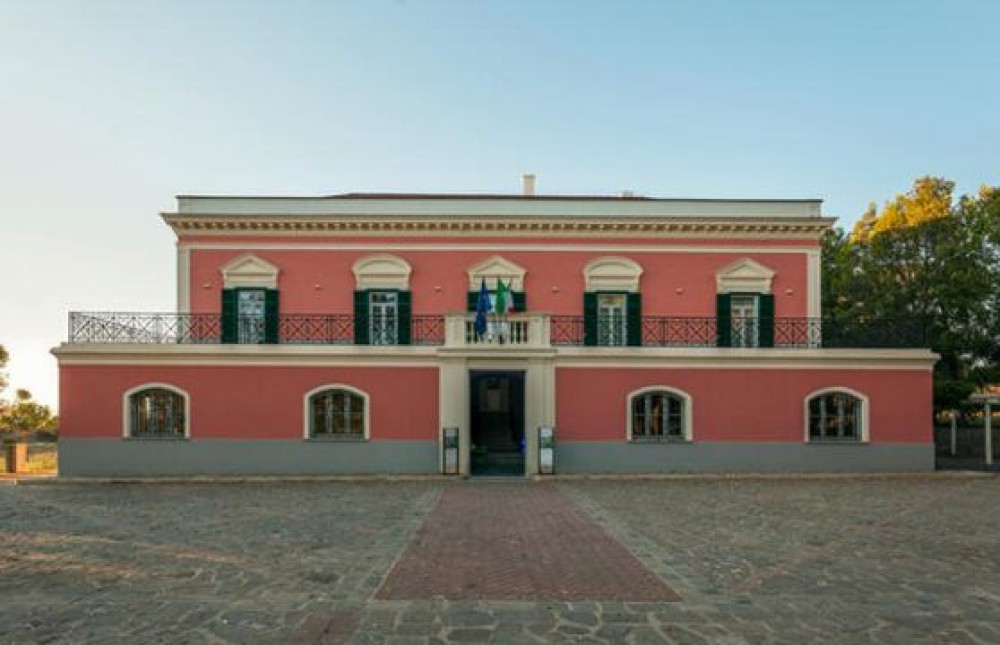Il National Park In the Cilento, Vallo di Diano and Alburni National Park Eleven species of amphibians are recorded, out of 13 present in Campania. Just over half are endemic species (i.e. exclusive to Italy).
An important naturalistic heritage that highlights the high biogeographical and conservation value of the territory. Although since the 1980s they have been universally considered as the group of Vertebrates whose members are most seriously exposed to the risk of extinction. They are the amphibians of Cilento, for which the Park Authority has presented a project among the 57 funded by the National Biodiversity Future Centerdrawing on the resources of the National Recovery and Resilience Plan (PNRR) Mission 4 – “Education and Research”.
It’s about the project “Implementation of predictive models for the adaptation of amphibians to climate change in the Cilento, Vallo di Diano and Alburni National Park” presented by the Park Authority. A project that aims to evaluate the role of artificial aquatic sites, such as wells and fountains – troughs, conservation and enhancement strategies of the protected area.
The structure of Mainenti Palace reflects the link between past and present, with renovated environments that maintain their historical charm and, at the same time, are adapted to modern needs. In 2021 the council chamber is named after Giuseppe Tarallo, former president of the Cilento National Park who passed away the same year.
Another important seat of the Park is located in Santa Maria di Castellabatenear the nineteenth century Villa Matarazzo. Located a few steps from the sea and surrounded by greenery, Villa Matarazzo is an elegant historic residence that serves as a center for the cultural and environmental promotion of the Park.
Thanks to its privileged position on the Cilento coast, it is the ideal point to welcome visitors and illustrate the natural wonders and traditions of the area. Villa Matarazzo often hosts exhibitions, cultural events, seminars and educational activities that also involve students. The headquarters has become a multifunctional center for environmental education and hosts the Museum of Landscape and Nature, with three multimedia and technological rooms to discover the rivers, ravines and mountains of the Cilento National Park.
Among the Park’s branch offices there is the Center for Biodiversity Studies, in via Montisani, a Vallo della Lucania which hosts meetings, conferences and training sessions.
E Palazzo Santa Maria a Teggianosince 2014 it has been a branch of the Park in Vallo di Diano. The start of work took place in 2021. It will become a reference point for culture
#locations #great #historical
–
**How do the predictive models used by the Cilento National Park project help to identify the most vulnerable amphibian populations and prioritize conservation efforts in the face of climate change?**
## Preserving Cilento’s Amphibian Treasures: A Conversation
**Welcome to World Today News. Today, we delve into the fascinating world of amphibians inhabiting the Cilento, Vallo di Diano, and Alburni National Park.**
**We are joined by two esteemed guests: Dr. Maria Rossi, an expert in amphibian biology and conservation at the National Biodiversity Future Center, and Dr. Luca Esposito, Director of the Cilento, Vallo di Diano, and Alburni National Park.**
**Welcome, Dr. Rossi and Dr. Esposito. Dr. Rossi, let’s begin with you. This article highlights the remarkable amphibian diversity found in Cilento. Could you elaborate on what makes this region such a hotspot for these creatures?**
**Dr. Rossi:**
*(Dr. Rossi discusses the specific geographical and environmental factors contributing to Cilento’s amphibian richness, highlighting its endemism and ecological significance.)*
**Dr. Esposito, building on that, the article mentions a pressing concern: climate change. How is the Cilento National Park addressing the potential threats posed by a changing climate to these vulnerable amphibians? **
**Dr. Esposito:** *(Dr. Esposito details the Park’s proactive approach, focusing on the project funded by the PNRR. He explains the use of predictive models and the role of artificial aquatic sites in amphibian conservation.)*
**Dr. Rossi, I’m curious about the “artificial aquatic sites” mentioned. Could you explain how these can be beneficial for amphibians and how the project plans to integrate them into the natural environment?**
**Dr. Rossi:** *(Dr. Rossi provides a detailed explanation of the project’s methodology and the ecological benefits of artificial aquatic sites. She might discuss specific design considerations, community involvement, and monitoring efforts.)*
**Let’s shift gears to the fascinating historical aspect of the Park. Dr. Esposito, the article mentions several key locations, including Mainenti Palace, Villa Matarazzo, and Palazzo Santa Maria. Could you tell us more about these sites and their role in both preserving the Park’s heritage and engaging the public?**
**Dr. Esposito:** *(Dr. Esposito elaborates on the historical significance of each location, highlighting their architectural features and how they serve as hubs for education, research, and community involvement.)*
**Dr. Rossi, how do these cultural and historical assets enhance the public’s understanding and appreciation for the Park’s unique biodiversity?**
**Dr. Rossi:** *(Dr. Rossi discusses the importance of interconnectedness between culture, history, and natural heritage. She may suggest how these locations can inspire conservation efforts and foster a deeper connection between visitors and the amphibian world.)*
**what are your hopes for the future of amphibian conservation efforts in Cilento, and what role can the public play in supporting these initiatives?**
**(Both experts share their vision for the future, highlighting the importance of continued research, public engagement, and community partnerships in safeguarding Cilento’s unique amphibian treasures.)*
**Dr. Rossi and Dr. Esposito, thank you for sharing your expertise and passion with us today.**
**(Outro: Encourage viewers to visit the Cilento National Park website and explore the resources available to learn more about amphibian conservation.)


